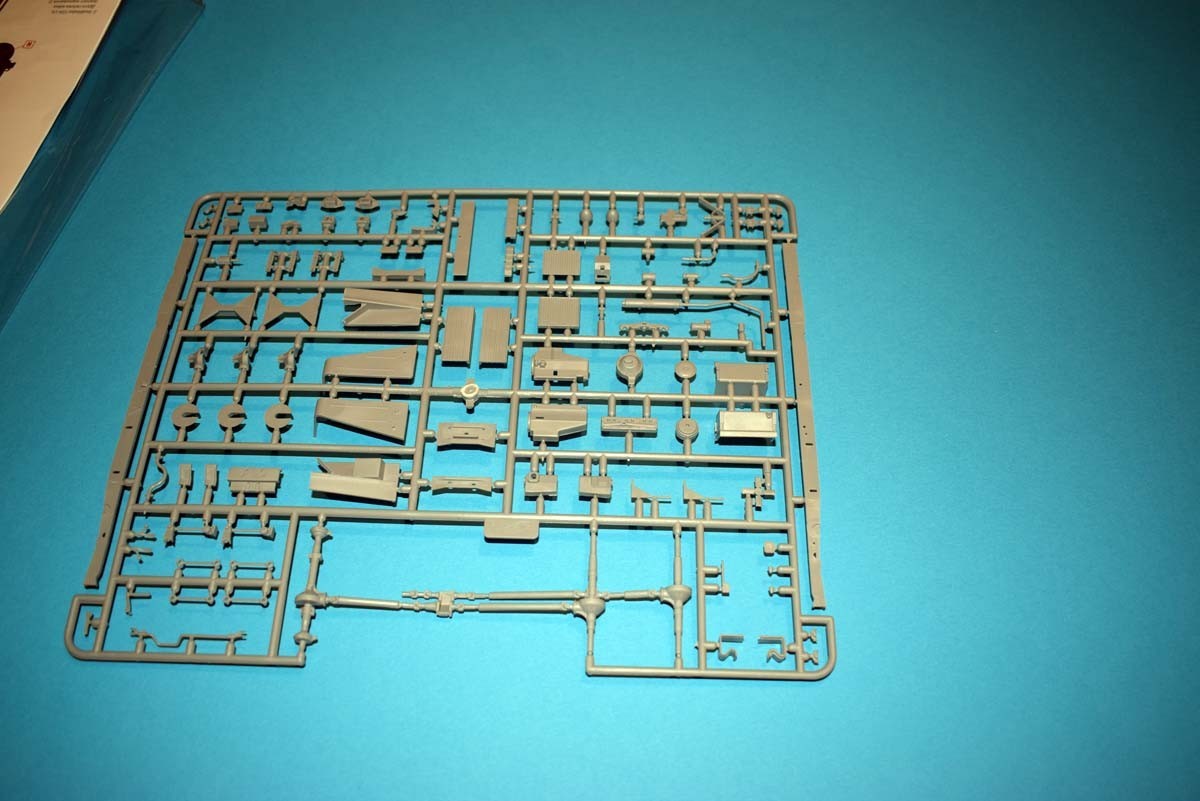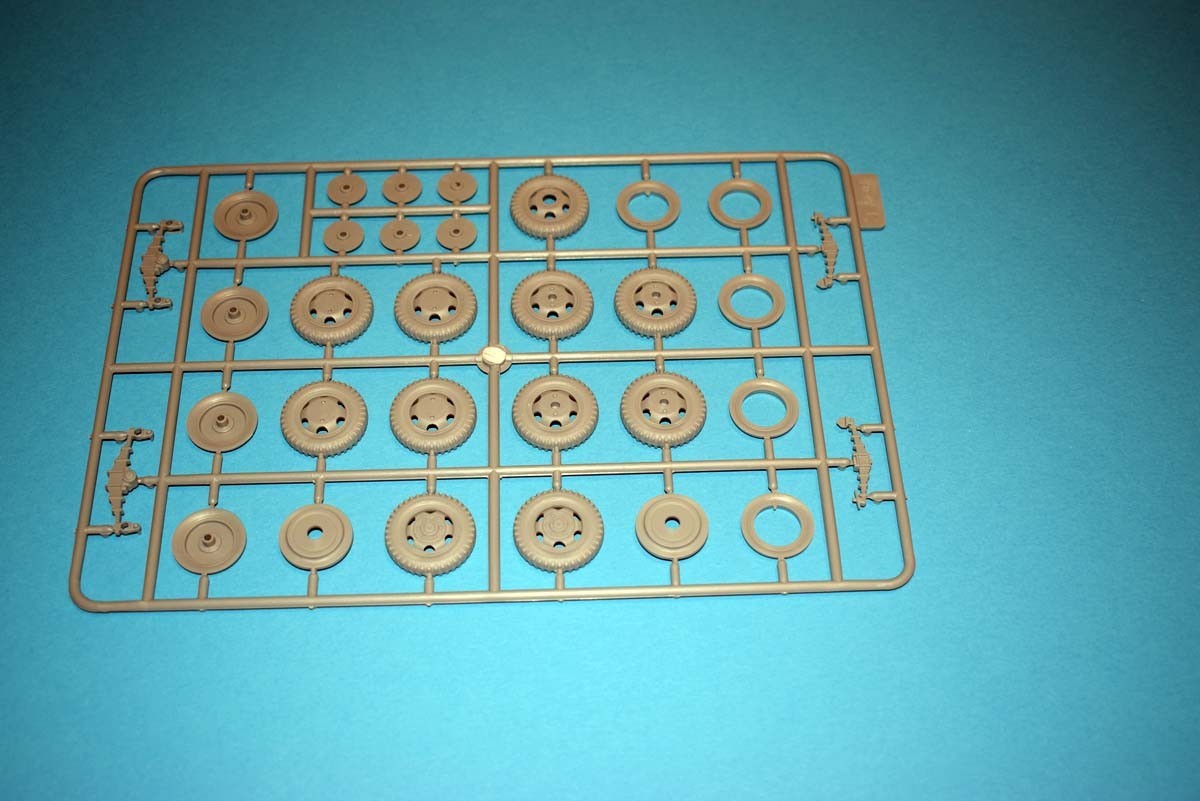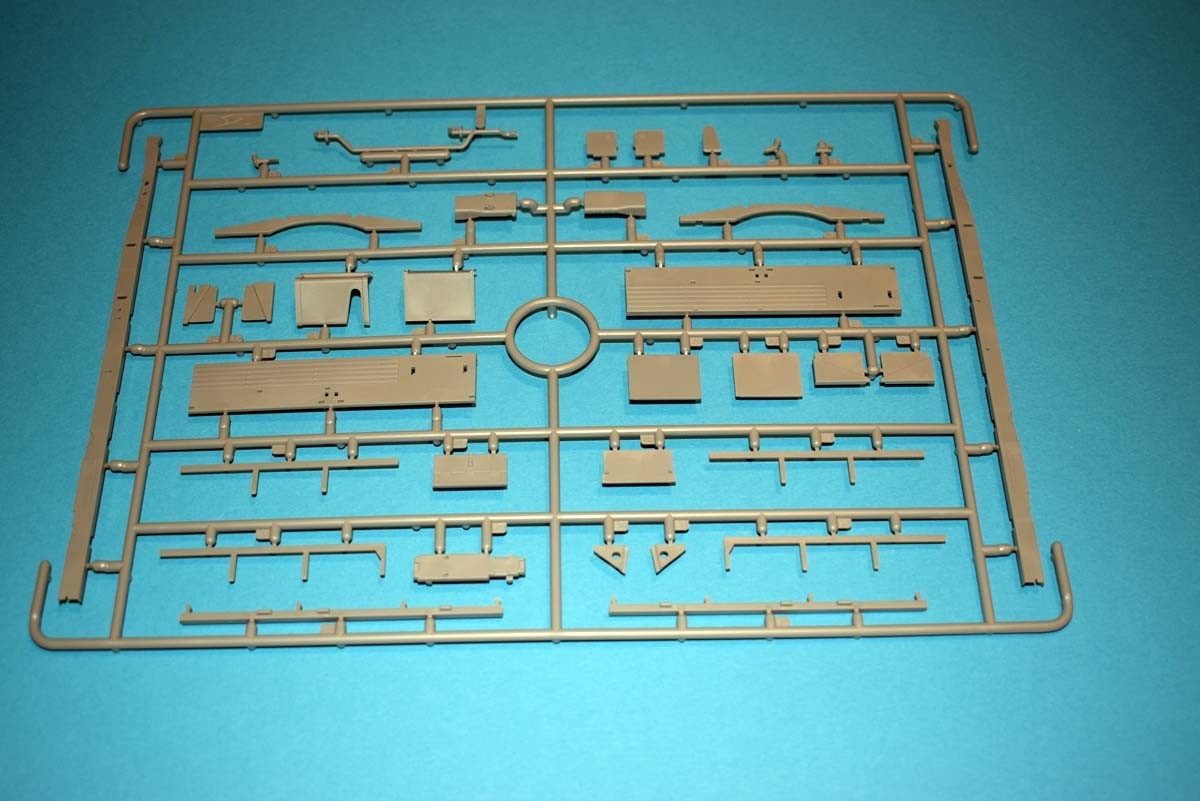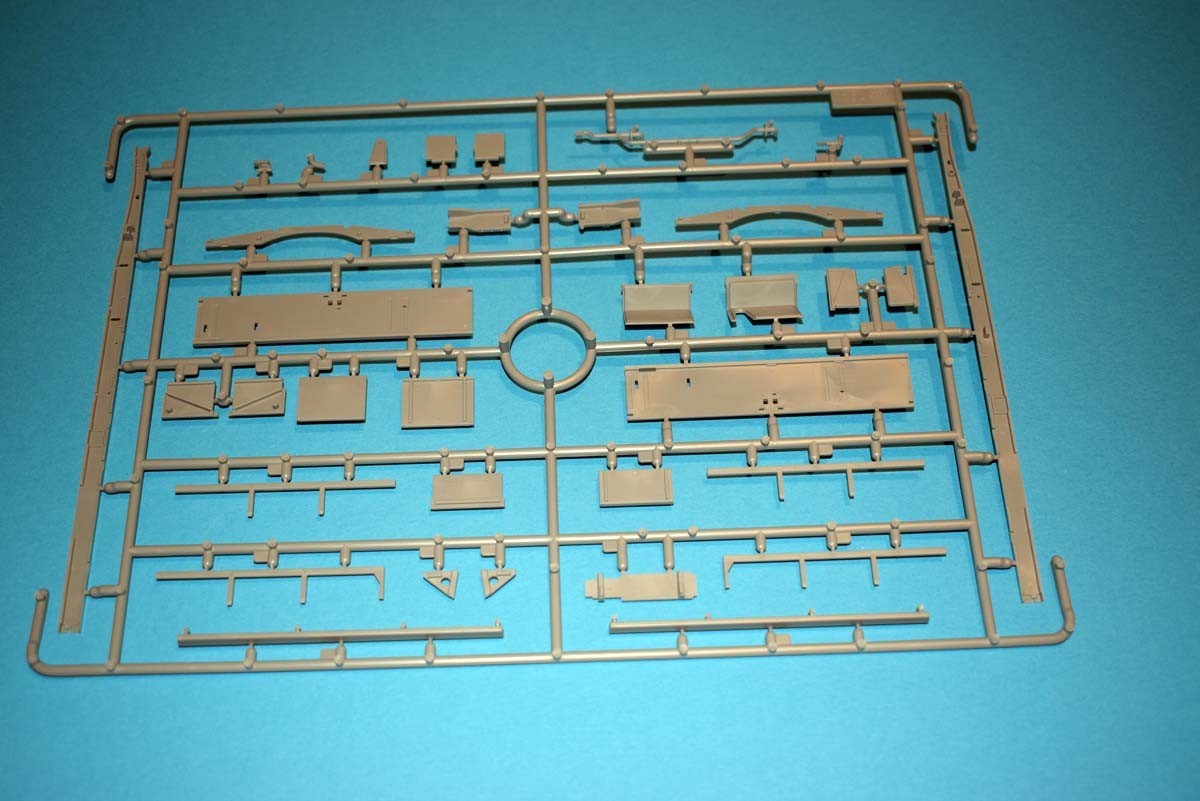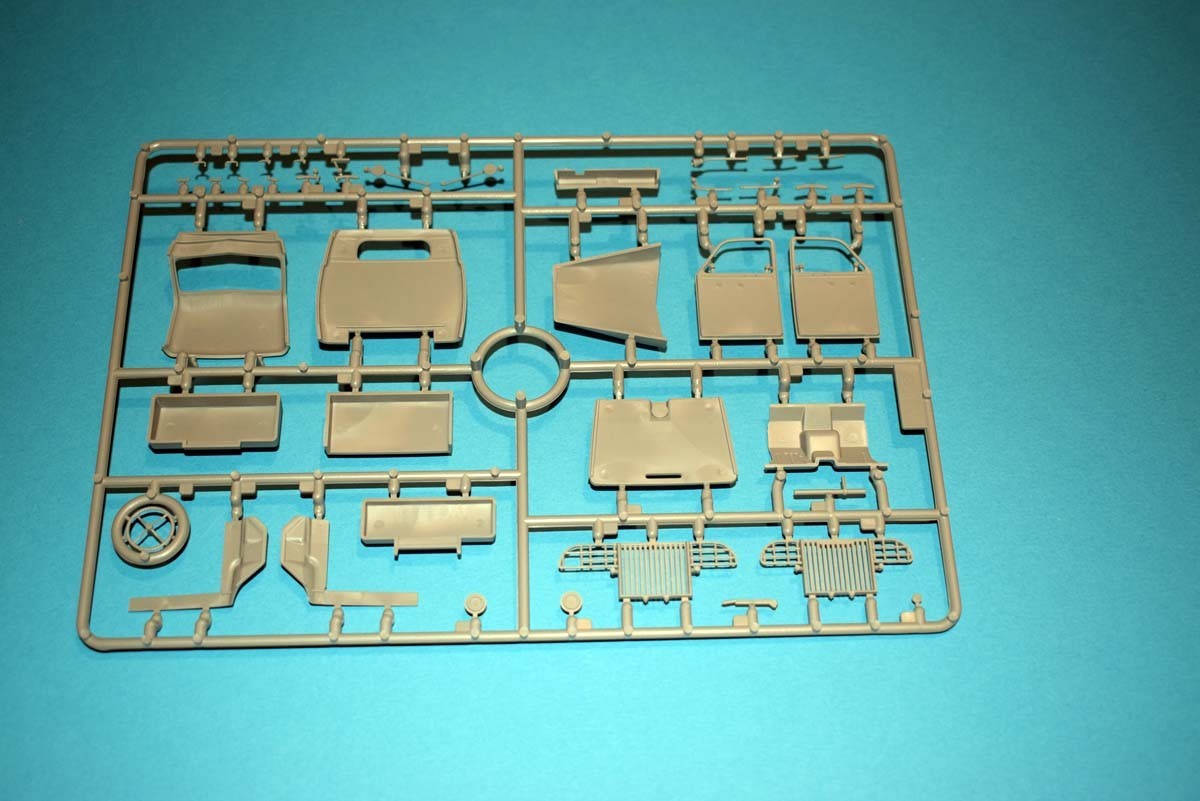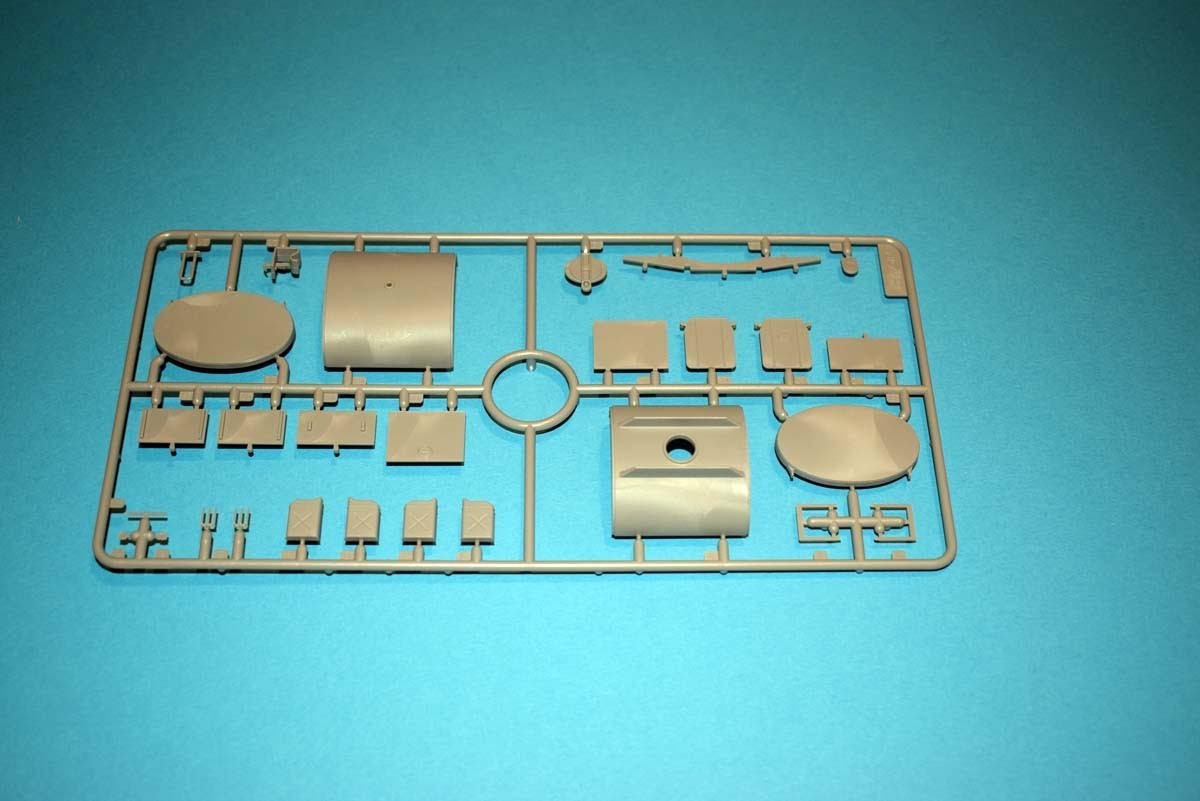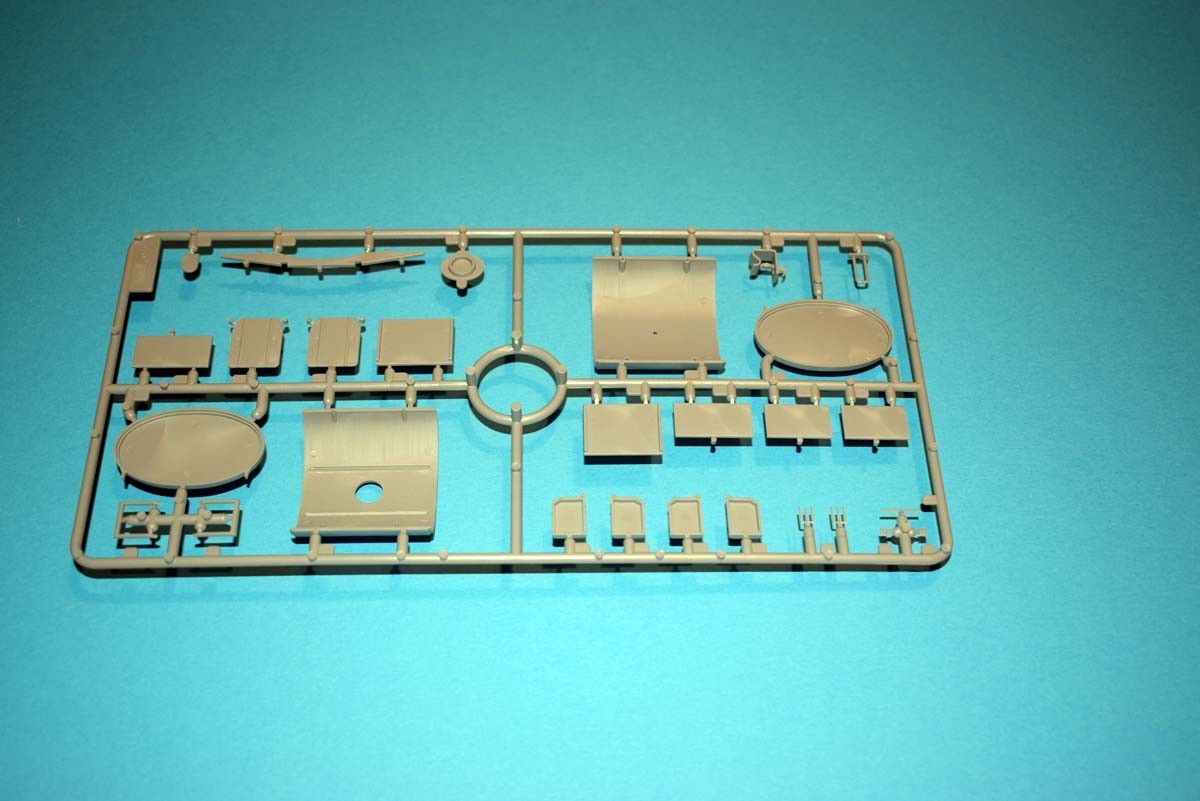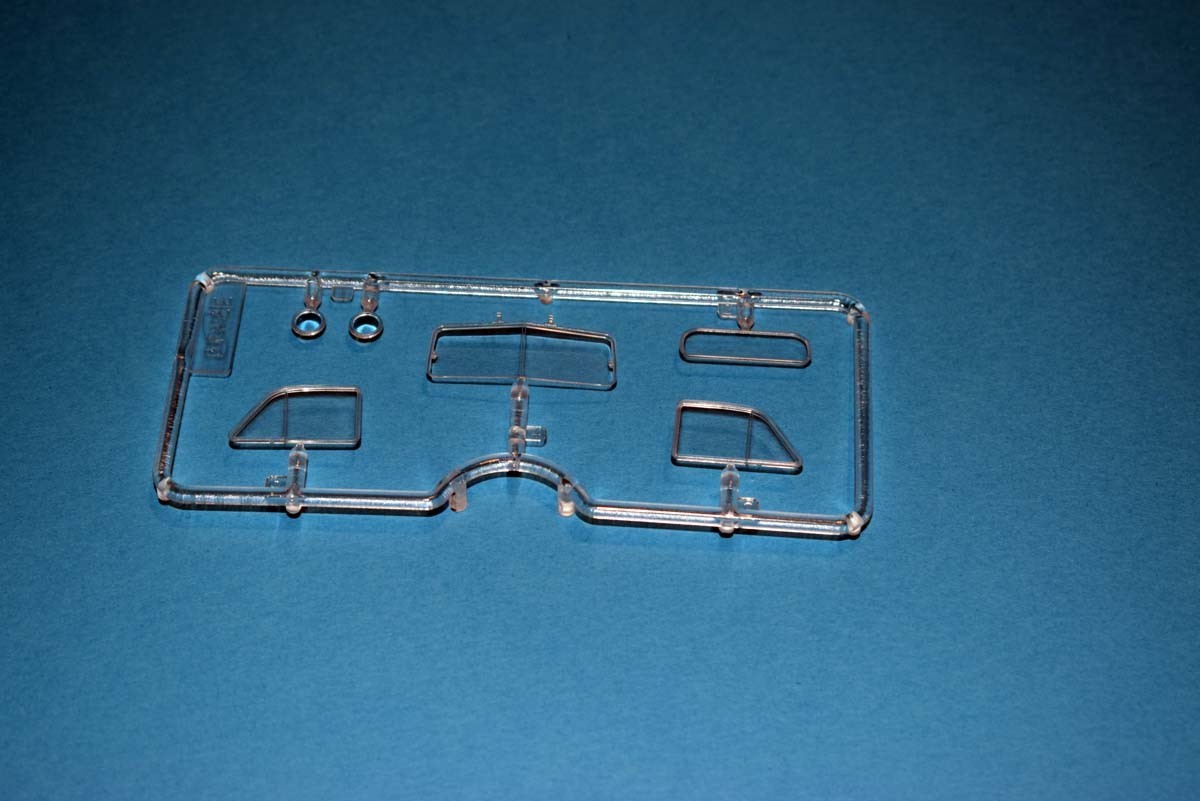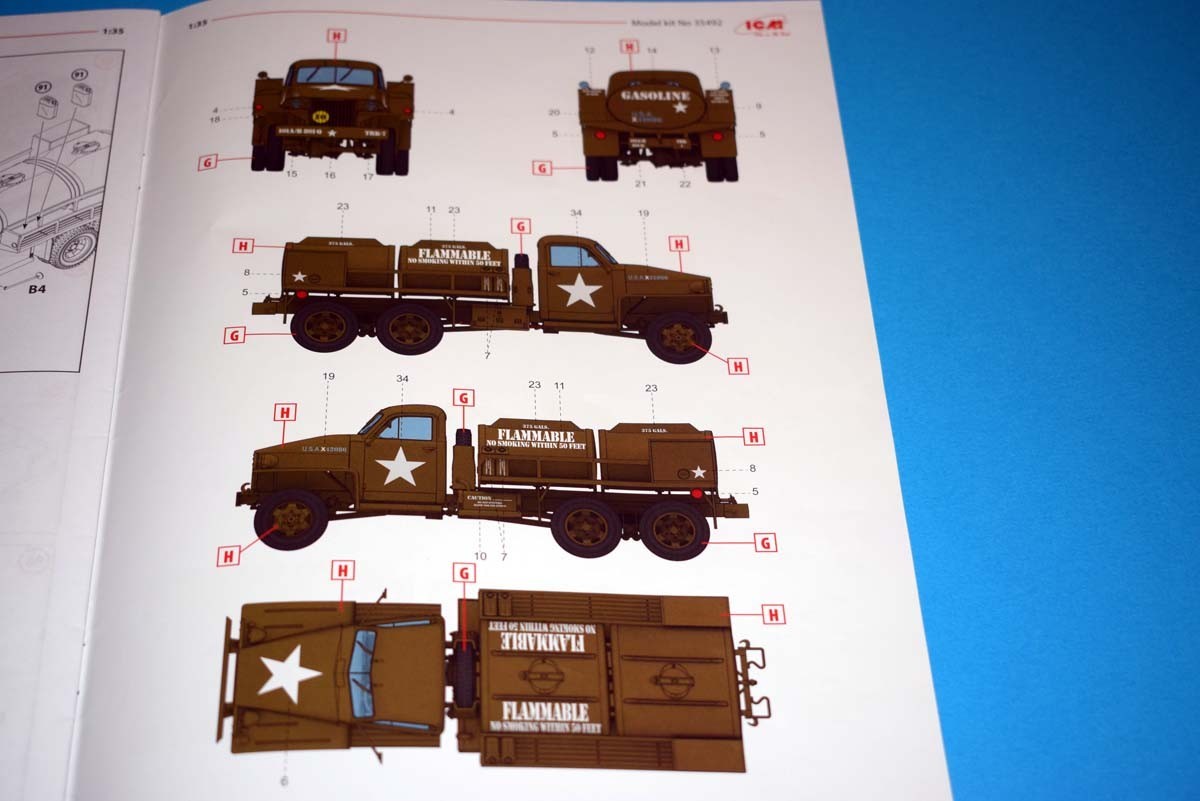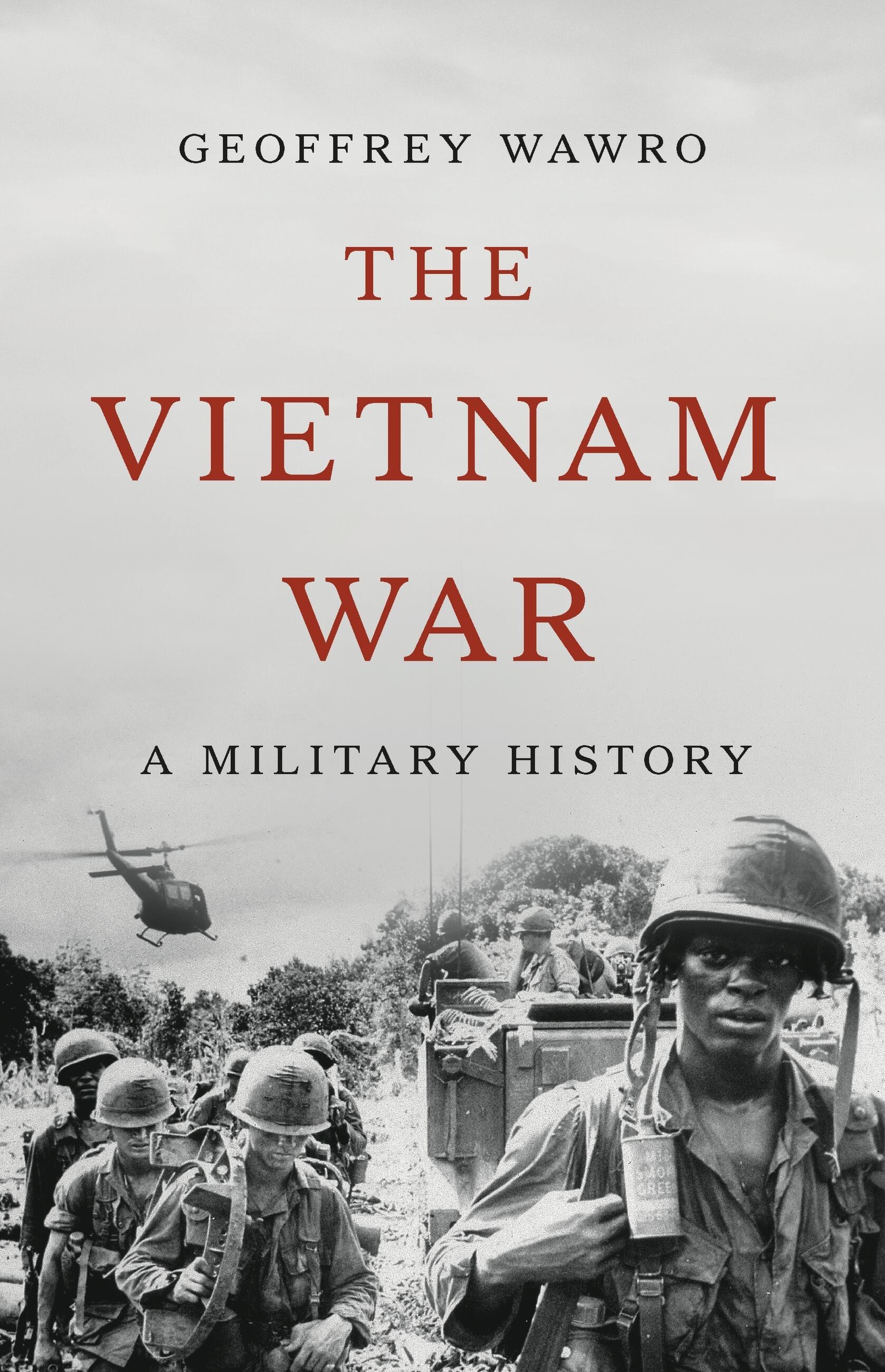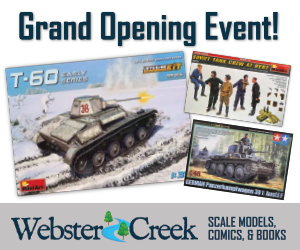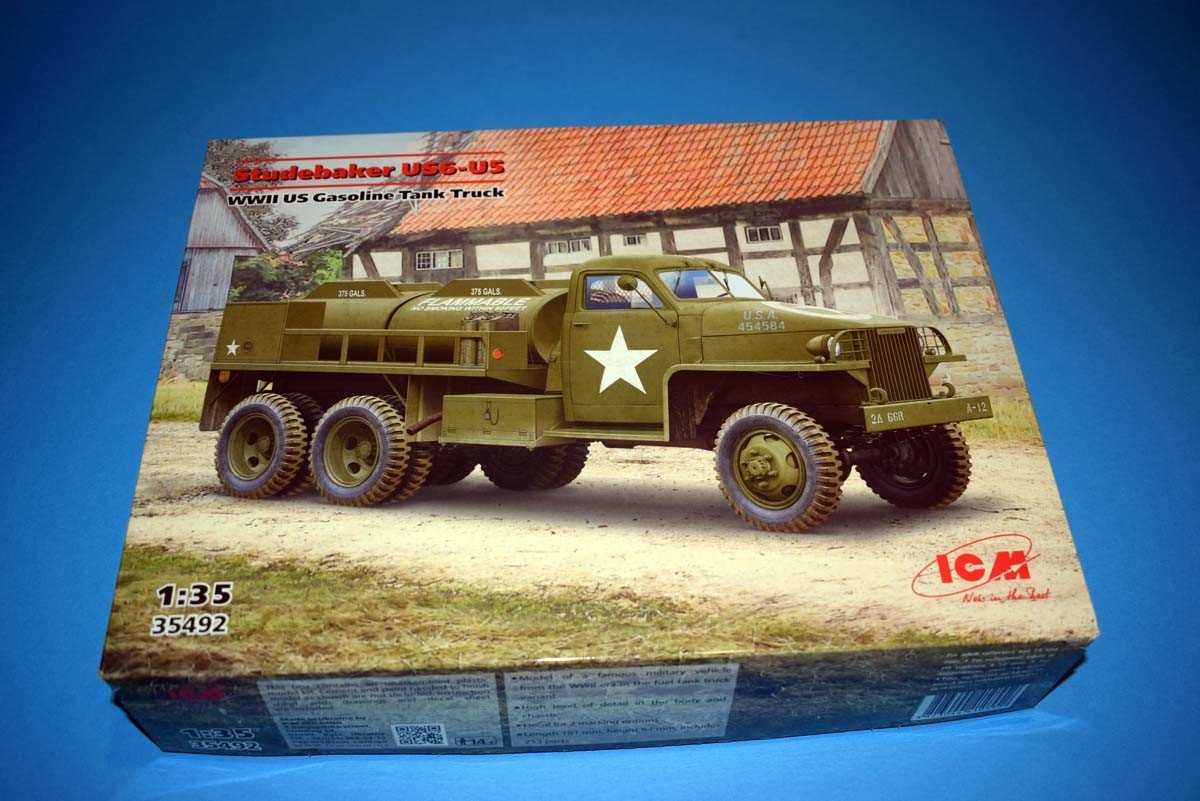
Introduction
The following introduction is taken from the ICM website:
The Studebaker US6 heavy cargo truck was developed by the Studebaker Corporation in 1941. The vehicle featured a robust design and excellent payload capacity, with its 6-cylinder Hercules JXD engine producing 94 horsepower, ensuring high off-road capabilities for the Studebaker US6. Approximately 200,000 vehicles of thirteen variations were manufactured in total. The Studebaker US6-U5 version was a versatile fuel tanker equipped with a 750-gallon (2840 litres) tank from Heil. The tank consisted of two tandem-mounted 375-gallon tanks, with racks on the sides for storing 5-gallon fuel cans. Conversion of the vehicles into fuel tankers took place at Heil’s factory in Milwaukee, Wisconsin. Around 1150 of these converted vehicles were produced. They were supplied to US allies, though some speculations suggest that some fuel tankers may have also been used by units of the US Army.
Review
This offering from ICM arrives in a flip top cardboard tray, with a separate card lid showing the artwork. Inside the contents are provided in a single plastic bag, with a loose instruction booklet which also houses the decals within its pages. An examination of the sprues only reveals one issue that will need to be tackled, and that comes in the form of ejector pin marks. Which are in a number of locations with various ease or difficulty of access. As modellers have made a point of wanting finer and finer details included in their model kits, you will need to take care when removing some pieces from the sprue.
The first thing that you should note when tackling this model, and that is that there is a number of parts marked out as not for use and this also includes 2 chassis rails - so make sure you start with the correct chassis rails (You have been warned!!) You will not be surprised to hear that this is a multi part chassis, and so care is required during assembly in order to get the correct orientation. But if you start from the rear of the model, where there are 2 large cross members this should give you a very good starting point. The leaf spring suspension will need some clean up due to moulding lines in the middle of the leaf springs. A good representation of the engine and gearbox is provided, as is a decent radiator and cooling system. But the engine bay and engine itself will need dressing up with wire detail to make the most of it. I am not going to critique ICM for supplying these details, as I rather like having these details present and so providing a number of unexpected display options. The wheels provided are injection moulded plastic, which I know will please more than vinyl rubber offers. So on the underside everything looks good.
The cab is made up of a number of different panels, and the interior of which will require the most work as regards the dreaded ejector pin marks. However, other than that, I do not see this area of the model causing any real issues for a competent modeller. While the cab needs to be added to the model during the assembly process, you do have the abilty if desired of doing the major painting before bringing it together with no obvious trips or falls I can see. The hood of the model is supplied separately, but I do feel that some work will be required if intending to show the hood up.
The fuel tanks on the rear of the vehicle provide 2 identical offerings, the only reason I can think for the 2 to be present is that it would allow 2 different types of fuel to be carried at the same time. The cylinders are straightforward to assemble having 2 halves for the upper and lower portion of the cylinder, with separate end caps and in inspection hatch on the top. The frame on which these are mounted is again multi part and again will require some care to orientate correctly. Storage boxes and guard rails should not represent any difficulty. The system for draining the fuel from the tanks is hidden on the underside, and so the detail is present but not easily seen. No pumping system that I can see is present on the vehicle and so I am a little bemused as to how the fuel gets into the tanks of vehicles that are higher than the fuel tanks themselves. To some extent I find myself wondering if this vehicles intent was for filling jerry cans only, and if so the gravity fed nature of the plumbing would be fine. A small number of jerry cans are provided with the kit, and the modeller themselves can add some odds and ends to the area behind the guard rails as desired.
2 finishing options have been provided for this release, however details are restricted to what the vehicle is and the fact that both finishing options relate to World War II.
Conclusion
This offering from ICM should prove an easy enough build for most modellers, with no major hitches to overcome beyond the general filling and sanding of ejector pin marks. Details on the model are generally good, but I do know that ICM often gets flack for the shapes and sizes of the doors on their US truck releases and I am not knowledgeable enough to either confirm or deny this possible issue. For myself, all I can say is that I was disappointed with the number of ejector pin marks that will need to be tackled, but the overall look and finish should by straightforward in my opinion.
